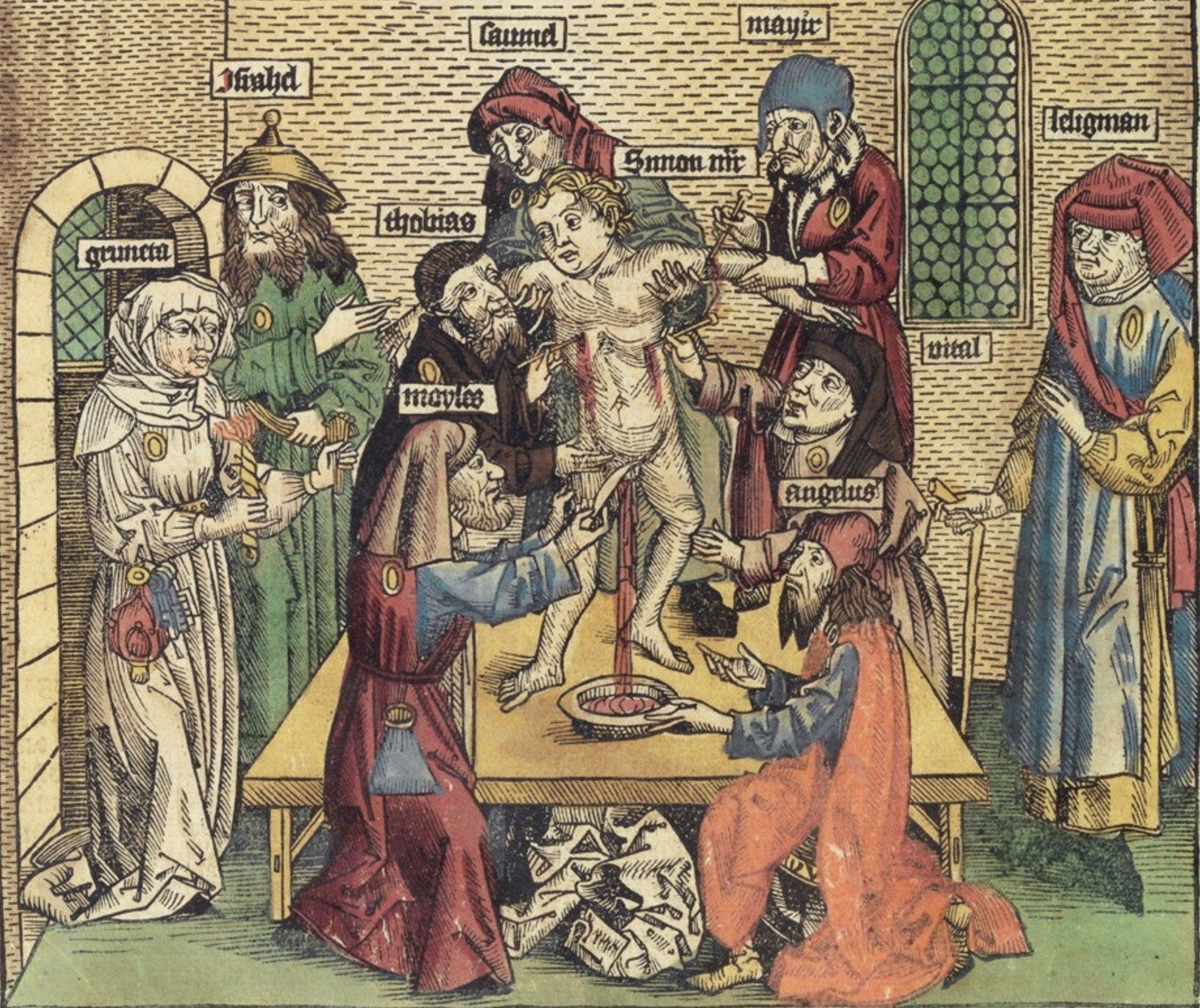When We Were Victims: The Blood Libel
When We Were Victims: The Blood Libel It's safe to say, I think, that Jews have never been well regarded, especially in Christian and Muslim lands. The gamut of acceptance has run from grudging tolerance at best to ... o well, I don't need to spell it out. Throughout our history there has been many a curious fabrication about who we are (Christ killers) and what we do (world domination), but one of the more grotesque slanders to surface was the conviction that Jews used the blood of Christians (usually children) for their unholy religious rituals. (Though no recipes have yet turned up in Jewish cookbooks, the blood of Christian babies seems to be an essential ingredient for Passover matzoh.)
This unsavory canard, born in medieval times and continuing right up to the present (O yes! Check out what Salah Eldeen Sultan, a lecturer on Muslim jurisprudence at Cairo University, had to say in a 2010 address that aired on Al-Aqsa TV) has come to be known as the Blood Libel. It wasn't the Jews who gave it that name, but it was the Jews who suffered the consequences: massacres in London and York in 1190; torture, execution, expulsion in Bern in 1293. One cute story coming out of Bazin in present-day Slovakia told of a nine-year-old boy abducted and bled to death. Thirty Jews confessed to the crime under "enhanced interrogation techniques" and were publicly burned. Shortly afterwards the child was found inconveniently alive in Vienna where he had been taken by the accuser, Count Wolf of Bazin, as a means of ridding himself of his Jewish creditors.
One of the presumed victims of Jewish ritual murder in 1475, Simon of Trent, was not so fortunate. The Italian boy was found in a watercourse running beneath the property of Samuel, the head of the local Jewish community. Even though it was the Jews who reported finding the body to the authorities, the entire community (both men and women) were arrested and forced under torture to confess to having murdered Simon to use his blood for ritual purposes. (See the woodcut above, naming not only Simon but prominent members of the Jewish community as well.) Top Catholic authorities, including the pope, had their doubts about the veracity of The Blood Libel accusation, but the fifteen Jewish men in the small community were burned at the stake anyway. Over the subsequent centuries, this "boy martyr" became the object of a cult with all the trappings of relics and annual processions.
We've just scratched the surface and haven't even come to the modern era. The sites of these imaginary crimes and the very real repercussions for local Jews -- pogroms, expulsions, sensational trials, imprisonment, death dealt out in any number of ways -- roll on: Velizh (1823), Rhodes (1840), Tiszaeszlár (1882), Kishinev (1903).
The formal indictment and trial of Mendel Biellis, a Jewish supervisor of a brick factory in Kiev, then part of the Russian Empire, sparked the greatest international scrutiny and criticism of the Blood Libel. In 1911, a 13-year-old child disappeared on his way to school. Eight days later, his mutilated body, drained of blood, was discovered in a cave near the brick factory. Beilis was arrested months later after a lamplighter testified that the boy had been kidnapped by a Jew. He spent more than two years in prison under horrendous conditions awaiting trial. During the trial, the trumped up nature of the prosecution's case was so obvious that the majority of the all-Christian jury voted to acquit him, although a finding of ritual murder (upheld in the face of a local police investigation that convincingly demonstrated the culpability of a gang of criminals) was allowed to stand. The Nazis made propaganda hay out of that 25 years later.
And then, in 1928, in the small manufacturing town of Messina, New York, four-year-old Barbara Griffiths wandered into the surrounding woods and disappeared. Hundreds of locals, organized by Massena’s police and firefighters, searched frantically through the night and into the next day. Yom Kippur was only two days away, and the Blood Libel began to spread. The theory caught fire not only with the townsfolk, but in the powerful figures of the state police and the town mayor. Rabbi Berel Brennglass, leader of the town's synagogue, was brought in for interrogation about the possibility of ritual murder. Brennglass rebuked his interrogators and expressed outrage that people believed such lies in the United States in the 20th century.
Later that day Barbara Griffiths wandered back out of the woods where, she told authorities, she had gotten lost and had slept through the night. Messina's pillars of society would have been more than happy to let the matter rest there, but Rabbi Brennglass brought in the American Jewish Committee and the American Jewish Congress who made it a national affair and extracted unwilling apologies from the mayor and the state police to the rabbi, the town's Jews, and all Jews of the United States.
And that was the end of it in the West, right? Ah ah ah! Don't forget about the Nazis! They used The Blood Libel in full force for anti-Jewish propaganda. A 1934 edition of the Nazi daily, Der Sturmer, devoted a special illustrated number to the Blood Libel, in which German scientists openly served Nazi aims. While in power, the Nazis revived old allegations and instituted reinvestigations and trials in territories under their rule or influence: Memel in 1936; Bamberg in 1937; and Velhartice, Bohemia, in 1940.
Once the Nazis were defeated and six million Jews had perished at their hands, who could invoke the Blood Libel again? The Poles, of course! Murderous antisemitism was part of their DNA. In the town of Kielce in 1939, one third of the population, approximately 24,000, was Jewish. Almost all of them were murdered during the Holocaust. However in the summer of 1946, about 200 survivors had straggled back. But ... on July 1, a nine-year-old Gentile boy left his home without informing his parents. When he returned on July 3, the boy told his parents and the police, in an effort to avoid punishment, that he had been kidnapped and hidden in the basement of the local Jewish Committee building. The lie was a patent one (the building in question had no basement), but the adult Poles knew the Blood Libel script as well as the mendacious child, and -- bang! -- another pogrom! A mob of Polish soldiers, police officers, and civilians murdered 42 Jews and injured 40 others.
The Kielce Pogrom convinced many a traumatized survivor that there was no longer a place for Jews in Europe and that perhaps in Palestine they might find refuge from the Blood Libel. Ah, but the Arabs took it up and made it a staple of anti-Jewish propaganda. (No escape!) I will spare you the roll call, but, as an example, an October 2000 of the Egyptian-govenment sponsored newspaper, Al -Ahram, published a full-page article titled “Jewish Matzah Made from Arab Blood."
But surely these medieval beliefs no longer carry currency in contemporary America! Wrong again! Just last year, the QAnon crazies used a sculpture of Simon of Trent to promote the theory that Hollywood elites are harvesting adrenochrome from children through Satanic ritual abuse in order to become immortal. (No escape!)
Strangely enough, the very outrageousness of the Blood Libel can offer Jews some kind of weird consolation in dark times when the world is telling us how evil we are. I know I'm asking for it by quoting Ahad Ha'am, a Jewish essayist and purveyor of cultural Zionism (who died in 1927, well before the State of Israel was a gleam in Ben-Gurion's eye), but ...
“This accusation is the solitary case in which the general acceptance of an idea about ourselves does not make us doubt whether all the world can be wrong, and we right, because it is based on an absolute lie. Every Jew who has been brought up among Jews knows as an indisputable fact that throughout the length and breadth of Jewry there is not a single individual who drinks human blood for religious purposes…. ‘But’ – you ask – ‘is it possible that everybody can be wrong, and the Jews right?’"
I am sorry if any of this can be interpreted as justification for the State of Israel's misdeeds. It is not. Being a victim conveys no special moral authority. Wrong is wrong no matter who is the perpetrator.
Recent Posts
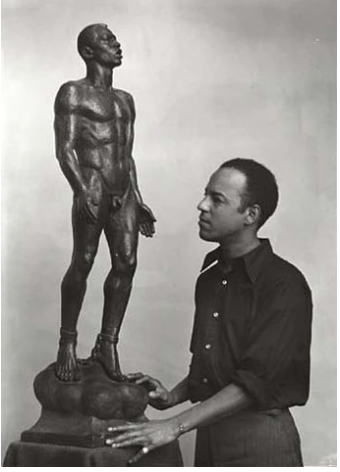
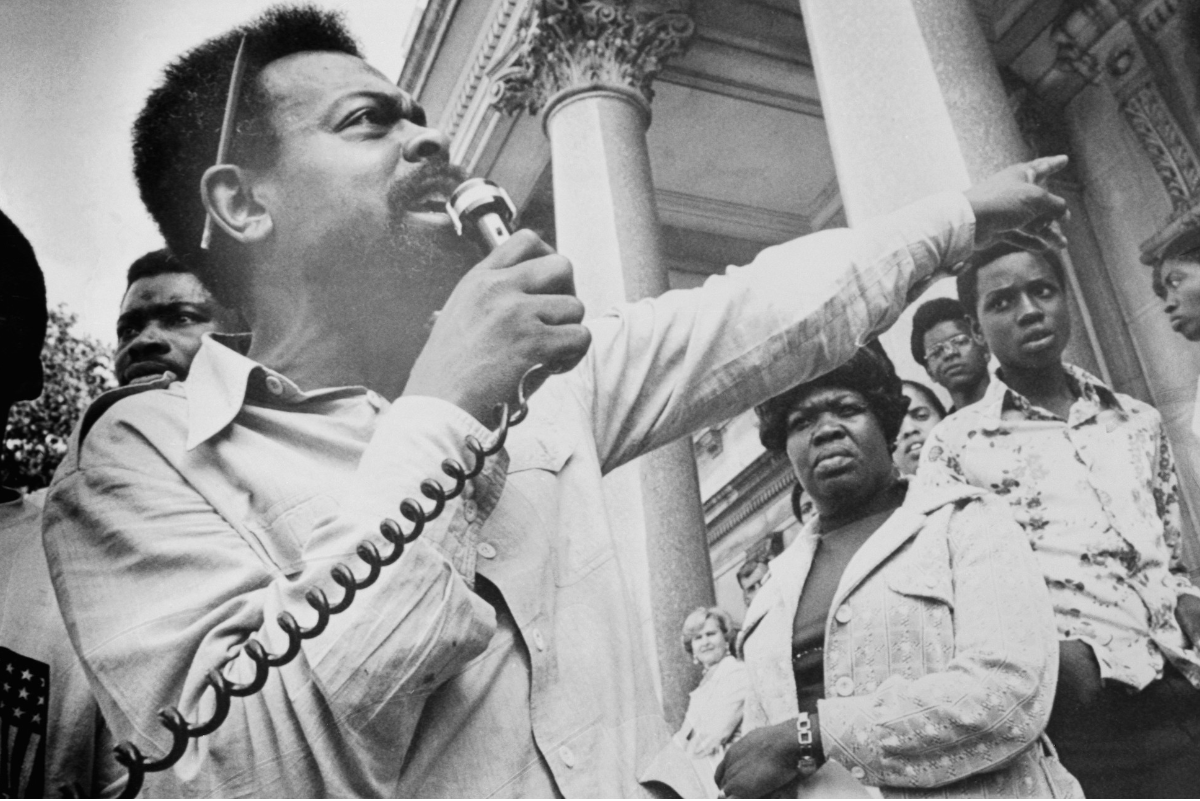
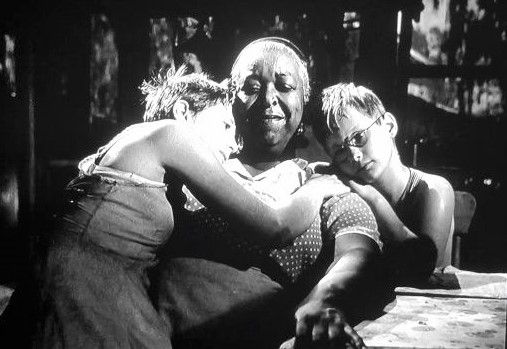
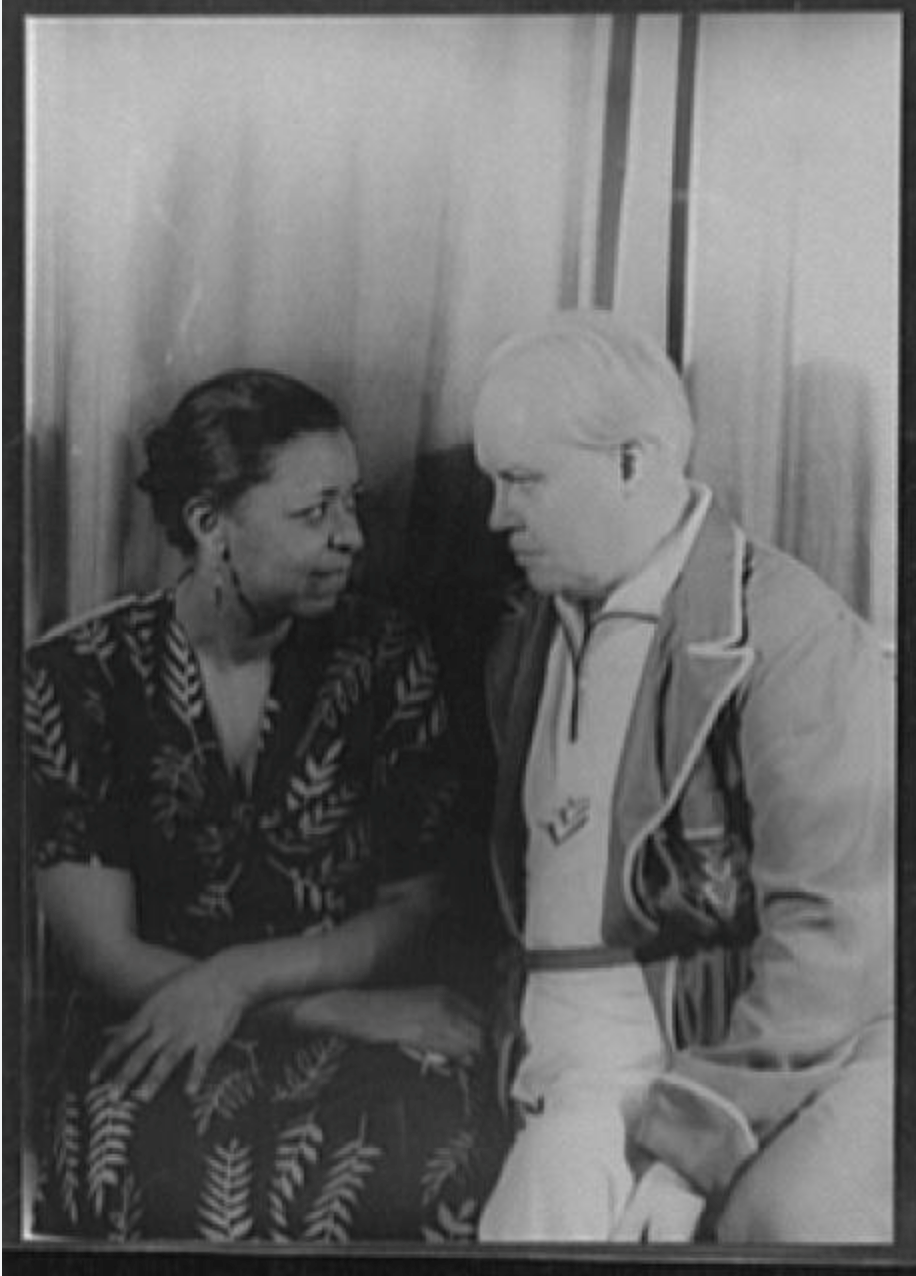
SHOGA FILMS is a 501(c) (3) non-profit production and education company. We create multimedia works around race and sexuality that are intended to raise awareness and foster critical discussion.
Contact Us
All Rights Reserved | Shoga Films
Stay Connected
Thanks for subscribing!
Please try again later.


